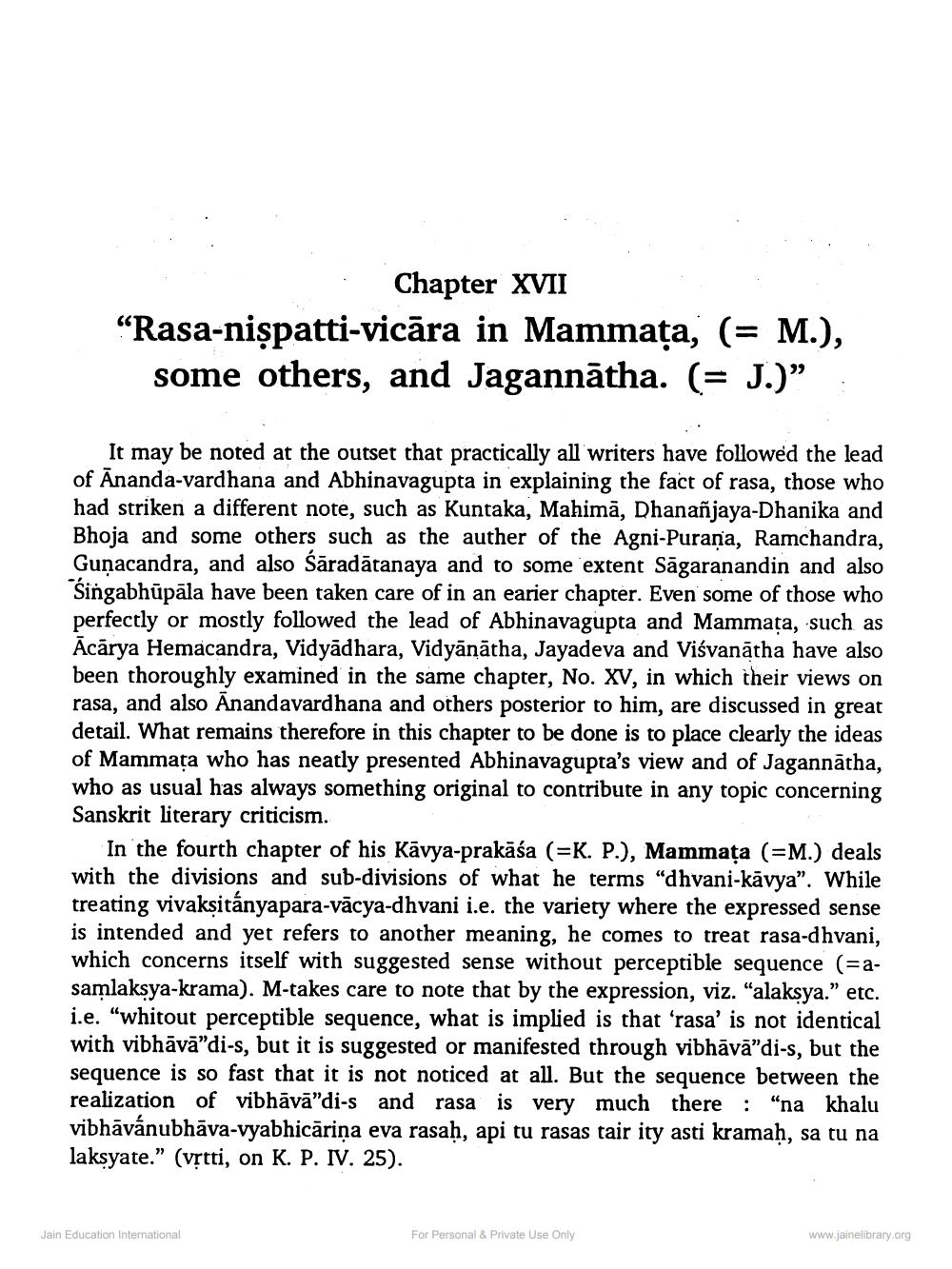________________
Chapter XVII
"Rasa-nişpatti-vicāra in Mammața, (= M.),
some others, and Jagannatha. (= J.)"
It may be noted at the outset that practically all writers have followed the lead of Ananda-vardhana and Abhinavagupta in explaining the fact of rasa, those who had striken a different note, such as Kuntaka, Mahima, Dhananjaya-Dhanika and Bhoja and some others such as the auther of the Agni-Purana, Ramchandra, Gunacandra, and also śāradātanaya and to some extent Sagaranandin and also "Singabhūpāla have been taken care of in an earier chapter. Even some of those who perfectly or mostly followed the lead of Abhinavagupta and Mammața, such as Acarya Hemacandra, Vidyadhara, Vidyānātha, Jayadeva and Viśvanatha have also been thoroughly examined in the same chapter, No. XV, in which their views on rasa, and also Anandavardhana and others posterior to him, are discussed in great detail. What remains therefore in this chapter to be done is to place clearly the ideas of Mammața who has neatly presented Abhinavagupta's view and of Jagannatha, who as usual has always something original to contribute in any topic concerning Sanskrit literary criticism.
In the fourth chapter of his Kavya-prakāśa (=K. P.), Mammața (=M.) deals with the divisions and sub-divisions of what he terms "dhvani-kavya". While treating vivakṣitányapara-vacya-dhvani i.e. the variety where the expressed sense is intended and yet refers to another meaning, he comes to treat rasa-dhvani, which concerns itself with suggested sense without perceptible sequence (=asamlakṣya-krama). M-takes care to note that by the expression, viz. "alaksya." etc. i.e. "whitout perceptible sequence, what is implied is that 'rasa' is not identical with vibhāvā"di-s, but it is suggested or manifested through vibhāvā"di-s, but the sequence is so fast that it is not noticed at all. But the sequence between the realization of vibhāvā"di-s and rasa is very much there "na khalu vibhāvánubhava-vyabhicāriņa eva rasaḥ, api tu rasas tair ity asti kramaḥ, sa tu na laksyate." (vṛtti, on K. P. IV. 25).
Jain Education International
For Personal & Private Use Only
www.jainelibrary.org




